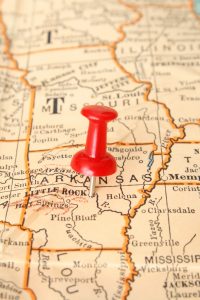
As telehealth capabilities continue to develop and grow, so does the capability to provide care to patients in underserved and rural populations. In partnership with Canvas Communities, ARcare, a federally qualified health center (FQHC), has developed a telehealth outreach program for homeless shelters within the central Arkansas community. Ms. Lauren Fields, ARcare’s Chief Nursing Officer, explained that this program was born out of serious need. There is a lack of services for the homeless population in addition to endless barriers, including travel to healthcare facilities, follow-up care, and ancillary services. Implementing telehealth in these facilities eradicates significant barriers for patients in this population to receive healthcare.
Since the implementation of this program, ARcare has been able to connect this population to multiple services and providers including established patient visits, medication refills, diabetes education, medical nutrition therapy, behavioral health services, and pharmacy consults. By bringing the nurse and front office personnel directly to the patients at the homeless shelters and directly connecting them to a provider at a distant site, patients are able to receive much-needed care without the worry of transportation and scheduling barriers that exist for face-to-face visits. Not only have telehealth capabilities allowed ARcare to continue providing care to underserved, rural areas throughout the global pandemic but also a historical weather event where many patients were unable to leave their homes. Many patients who would have gone without medication refills, consults, behavioral health, diabetes education or acute care were able to receive that care with no delay thanks to telehealth.
While telehealth has been a major benefit for this population, there are still a few limitations, including imaging and diagnostic care. In response to this, ARcare has arranged transportation to patients in need of imaging or in-house lab work. Eliminating these barriers ensures that more patients will follow through with their care. Another obstacle faced with this program has been reimbursement for services, but ARcare attempts to assist uninsured patients with finding a representative that can meet their insurance needs.
The response from patients and providers using telehealth services has been very positive. Patients are embracing telehealth and want to be certain that they can do their follow-up visits via telehealth. The biggest question patients have is surrounding diagnostic testing and want to be certain they can receive their results by telehealth rather than in-person. In addition to COVID-19 safety reasons, many patients in the homeless population of central Arkansas have a fear of healthcare facilities and waiting rooms but also want to make sure they can receive the same level of care they would if they were to go in person.
Most of the providers, on the other hand, were comfortable with telehealth and introduced to the service prior to the pandemic. Providers have gained even more familiarity with the service throughout the course of the pandemic and have incorporated it into their daily work schedules. Telehealth is truly essential in making certain that patients have continuity of care regardless of fear, snowstorms or transportation barriers that keep them from receiving face-to-face healthcare.
The South Central Telehealth Resource Center (SCTRC) has assisted ARcare with the implementation of telehealth over the past few years. The SCTRC has provided education, billing guidance, and conferences that have been helpful in navigating this new service line. SCTRC has assisted ARcare in the launch of telehealth in both school and shelter sites to provide care to underserved populations.
If you’d like to learn more about ARcare, visit the program website at http://www.arcare.net.
Have a Real World Example of your own?
Do you have a time in which telehealth has impacted your life? We’d love to hear your story! Please complete the form below to share your Real World Telehealth Example with the SCTRC team.





